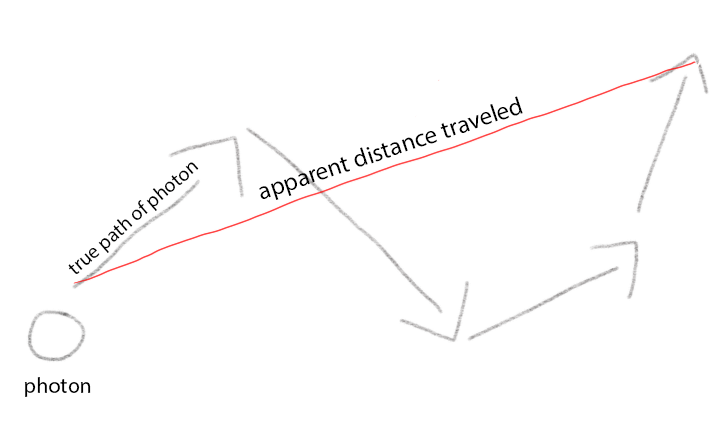After around 50 years since the Higgs boson’s existence was proposed in the 1960’s, scientists at CERN have now confirmed at a 4.9 sigma significance level (more than 99.9999% confidence) that a particle that looks like the Higgs boson exists. Evidence from the ATLAS and the CMS experiments at CERN show a particle with the predicted Higgs boson mass of around 125 GeV resulting from the head-on collision of two protons.
Remember from Albert Einstein’s famous E = mc^2 equation that mass is energy divided by the square of the speed of light. Particle masses are measured using the voltage (or energy) of the electron as the standard. At over 125 x 10^9 electrons worth of energy, the Higgs boson is the heaviest particle that has ever been produced at the Large Hadron Collider (LHC). Indeed, finding this particle was one of the main motivations of building a particle accelerator with the size and power of the LHC in the first place.
A boson is a particle whose behavior can be described by a system called Bose-Einstein statistics. The Higgs boson is a special kind of boson called a “gauge” boson. This class of bosons brings about the fundamental forces of nature, with the photon mediating electromagnetism, gluons mediating the strong force (which holds quarks, the building blocks of protons and neutrons, together), and the Z and W bosons mediating the weak force (which is involved in radioactive decay and hydrogen fusion in stars). The as-yet-undetected graviton is not predicted by the Standard Model, but is a gauge boson that mediates the force of gravity in some quantum mechanical descriptions of gravity.
The Higgs boson has been called in the media as the “God particle,” as it will solve a key problem in the current Standard Model of particle physics. The Standard Model describes the nature of matter through dozens of subatomic particles. The initial problem with the model, however, is that it shows that particles initially have zero mass and cannot explain why some particles have mass. If particles don’t have mass, they will whiz through the universe at the speed of light. This is clearly not the universe we live in.
To solve this matter, Peter Higgs, among other independent teams of scientists, proposed what came to be known as the “Higgs mechanism.” Higgs suggested that throughout the universe exists a field, now called the Higgs field. Fields can be described using particles, like how the electromagnetic field can be represented by light particles called photons. The particle of the Higgs field is the legendary Higgs boson.

The Higgs mechanism acts similarly to how photons, or light particles, travel at 299,792,458 m/s in a vacuum, but not when there are particles in the way. Light appears to slow down (and bends) in a medium, such as glass, because it actually travels a longer-than-apparent path.

Photons hit glass particles and get deflected from their path, resulting in a longer true distance traveled despite appearing to have traveled a shorter distance. Since speed is distance over time, it appears to us as if the photon has taken a longer travel time, when it actually just traveled a longer distance at the same speed it always does. Higgs bosons act like glass particles on a photon, obstructing the path of Higgs-interacting particles, such as electrons, in the universe. The “God particle” isn’t magical or supernatural as its name suggests it to be, but without the Higgs boson, there would be no people to wonder why particles have mass.

Recall from Newton’s first law that inertia is the tendency to remain at rest, if initially at rest, and tendency to remain in motion, if initially in motion. Since mass is simply the measure of inertia and particles naturally have no mass and fly around at the speed of light, all Higgs-interacting particles will be slowed down by the Higgs field and look to us as if they had gained a resistance to change in motion, which we measure as mass. The photon does not interact with the Higgs field, so it retains its speed and lack of mass.
The Higgs mechanism explains how many particles, such as electrons, gain inertia (or mass). Quarks, which make up neutrons and protons, also gain some of their mass through the Higgs mechanism (though most of their mass comes from interacting with gluons). To be clear, the Higgs boson is not the reason for all mass in the universe.
The Higgs boson is hoped to be the final piece of the Standard Model of physics. Further work will be done to establish that the discovered massive 125–126 GeV particle does indeed have the properties that have been predicted for the Higgs boson. However, even just finding a 99.9999% credible Higgs boson candidate makes scientists more confident that we have in the Standard Model a good picture of the universe at its smallest and weirdest scales.
Peter Higgs Image and Tear Metaphor Credit: Reddit

